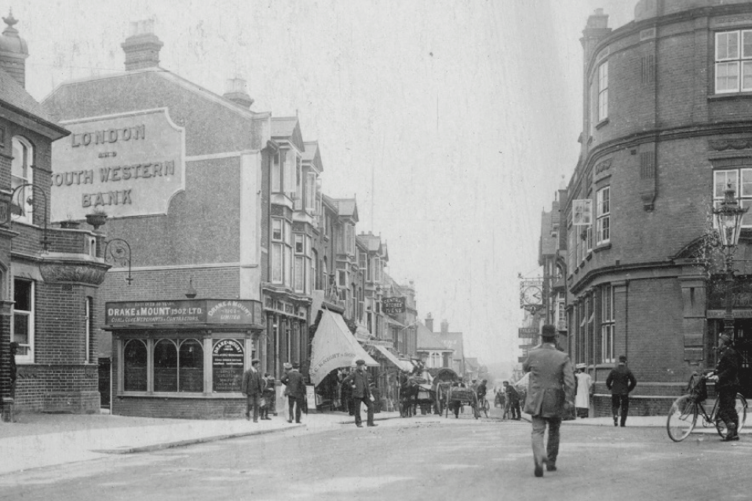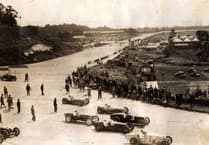There has been a great deal of change in recent years to our high-street banks. Interiors look much different with fewer cashiers on hand now to serve customers.
Many sub-branches have closed as internet banking as increased.
This is the first part of a look at both the history of banking in Britain and Woking’s banks, written by Trevor Howard.
Until the mid-18th century, the majority of private banks were located in the city of London. The politician Edmund Burke stated in 1750 “there were not above a dozen bankers, outside London, in the country”.
Those banks situated outside London were known as “country” or “provincial” banks. By 1798 there were just over 300 provincial bankers.
Nearly all provincial banks would have had a London agent, who would deal with stockbrokers, bill discounters and acceptance houses on their behalf. He would also give advice and act as a “lender of last resort”.
Until 1826, all private banks were partnership banks which, under common law, meant the partners were jointly and severally liable for the whole of the partnership debts.
This had the effect of restricting the establishment of branches as that implied trusting someone else with one’s assets.
Many provincial banks were started by businessmen as a means of generating capital for investment.
Agricultural banks, for example, were created to generate the required capital for the mechanisation of farming. Anyone who had large sums of money lying unused for a period of time was tempted to start a bank – and there were no legal impediments.
Brewers, for example, had perhaps six months’ grace on paying malt duties to the government. This money could not be invested in their businesses but it could be used to support the issue of banknotes.
The issue of banknotes was equivalent to money borrowed free and lent at interest.
Banknotes were payable on demand, it being an act of bankruptcy not to immediately meet such a demand. Banks therefore had to keep enough coin in hand to meet likely calls for redemption of notes.
This “promise to pay” is still present on modern banknotes although, since the 1925 Gold Standard Act, gold sovereigns and half sovereigns have ceased to circulate as everyday currency.
The banker’s aim was to confine his notes to the immediate locality, where they would be recognised and trusted, and hopefully remain in circulation for a long time. Once outside the vicinity, the notes would gravitate to his London agents for redemption.
In the first decade of the 19th century, farmers increased their corn-growing acreage as the Continental System restricted imports. When this ceased in 1814, corn prices fell rapidly and there was a financial crash; 89 nine banks became bankrupt.
In December 1825 a crisis occurred which saw the collapse of many private banks. A major factor was the over-issuing of notes such that they could not be honoured if a number came in for payment together.
Other contributory factors included a tighter fiscal policy by the London banks and bad speculation in the booming industries, coinciding with a slump in agriculture.
The collapse of one or two banks caused a run on the others creating a domino effect and general panic set in; 79 banks stopped payment.
In May 1826, the Country Bankers Act allowed the establishment of joint-stock banks with more than six partners, provided they had no place of business within 65 miles of London.
While the partners were still liable for their debts, the Act did provide for the appointment of “public officers” through which the banks could sue and be sued.
This had the effect of stabilising the banking scene.
It also created very tough competition for the private banks.
The first private bank in Surrey was Haydon’s of Guildford which was started in 1765 and continued in business for nearly 120 years, before failing in 1883. Other successful private banks appeared in all of the major market towns in Surrey – Godalming, Farnham, Chertsey, Kingston, Reigate, Dorking and Croydon.
Following the 1826 Bank Act, joint-stock banks started to be formed. These appeared in Surrey – mainly at first in what is now Greater London – in the mid-to-late 1830s after the 1833 Act had removed the 65 miles “exclusion zone” around London.
The growth of these was rapid. By 1867, for example, the London & County Joint-Stock Bank had branches in Croydon, Dorking, Epsom, Farnham, Guildford, Kingston and Richmond.
To compete, some of the private banks also started to develop networks of branches – notably Thomas Ashby & Sons, who opened the first bank in Woking.





Comments
This article has no comments yet. Be the first to leave a comment.